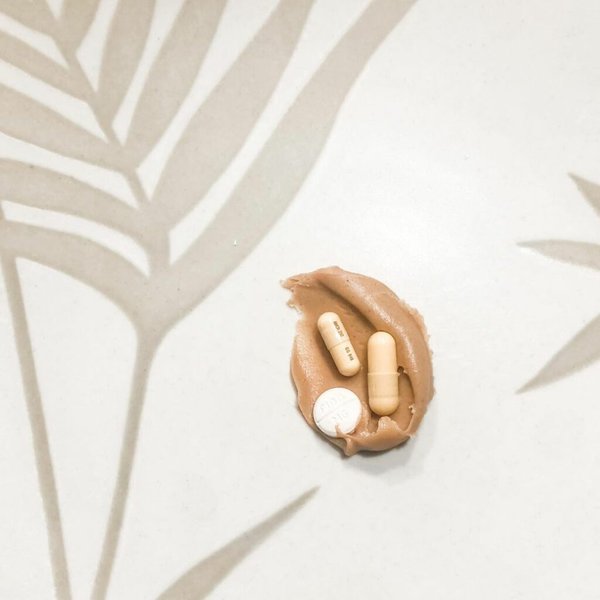Like any other animal with a urinary tract, dogs are susceptible to urinary tract infections. These range from mild irritation to serious infections that threaten the pooch’s life. As a pup parent, it is very important to understand dog UTIs. This is particularly important if you have a dog that is predisposed to the condition.
By definition, UTIs are infections that can occur anywhere along the urinary tract. They mainly affect the urethra but may ascend to the bladder, ureters, and kidneys of the dog. Main signs that you may notice are changes in urinary patterns including incontinence and distress during or after potty breaks.
In the sections below, we will take a closer look at everything you need to know in terms of what they are, what causes them, how to deal with them, and most importantly, how to prevent them. But first, let’s dive right into some of the most important symptoms that can alert you to potential a UTI in your dog.
How Do You Tell If A Dog Had A UTI?

There are many different signs and symptoms of UTI in dogs for the vigilant dog parent. Let’s take a look at some of the most common and obvious of these that will let you know that your dog possibly has a urinary tract infection.
Increased Frequency Of Potty Breaks And Accident
If you had a dog that was previously successfully potty trained suddenly start having potty accidents then they probably have a UTI.
The irritation from the infection causes reduced capacity to hold urine between potty breaks. The dog will therefore either need more potty breaks or will end up having accidents as they wait.
The irritation can also cause incontinence in which case the urine leaks out.
Whimpering During Or After Peeing
You may also notice that your dog is uncomfortable while peeing and immediately after. This is because urinary tract infections cause intense irritation to the tract lining which is worsened by the passage of urine.
Blood Or Pus In Urine
In cases of serious urinary tract infections, there may be bleeding and pus formation along the tract. This makes its way to the dog’s urine. You may notice it as the dog’s urine being very dark and almost similar to black tea which is the case of blood in urine.
With pus, on the other hand, the urine will appear cloudy.
Unusual Smelly Urine
It is possible for dog urine to smell different if they have a UTI. The strong stench is more often than not as a result of presence of pus cells and other debris from the affected tract lining.
Vet Testing
By far the best way to tell if your dog actually has a UTI is through confirmation from a vet after appropriate testing. Some of the test strips used and recommended by vets are also available for at-home use which is super convenient.
Can Urinary Tract Infection Kill My Dog?

As we earlier mentioned, UTIs in dogs range from mild infections to serious life-threatening ones. The mild urinary tract infections sometimes go away on their own with little, if any, interventions.
The spontaneous recovery time in these cases is between 1 to 2 weeks.
One the other hand, UTIs can be deadly for the dog which is why it is always best to actively manage the condition even when symptoms are mild. UTIs get fatal when the dog develops serious complications. These include:
Pyelonephritis And Kidney Failure
Pyelonephritis in dogs occurs when the microorganisms responsible ascend from lower segments of the urinary tract up to the kidneys. The infection then takes hold within these vital organs resulting in damage of crucial tissues.
In serious cases, the kidneys may fail completely which results in derangement of different functions required for life including electrolyte balance.
Reduced Appetite And Weight Loss
Another way UTIs can threaten your dog’s life is through reduced appetite and subsequent complications like weight loss. This happens in cases where UTIs and complications like pyelonephritis persist for months on end.
As a result of the pain from infections especially when the bladder and kidney are involved, most dogs refuse to eat or be active. If this continues for long the dog can starve to death.
Sepsis
Another potentially life-threatening complication to consider with UTIs is sepsis. This is where the microorganisms responsible for the infection and their byproducts make it into the bloodstream. This can result in septic shock and multi-organ failure.
What Causes UTI In Dogs?
When it comes to dealing with UTIs, you have to understand the causes and risk factors in order to come up with specific strategies that are more likely to be successful.
Technically speaking, UTIs are caused directly by microorganisms including bacteria and yeast cells that invade the tract lining.
What you have to be concerned about are the underlying causes and risk factors that allow these microorganisms to invade. Here are the biggest culprits.
High Blood Sugar Levels
Your dog’s diet can actually cause UTIs especially if it is unbalanced and unhealthy. High levels of blood glucose due to high carb diets or conditions like diabetes result in high levels of sugar in urine.
The sugar in turn promotes the growth of colonies of responsible microorganisms which results in the infection.
Inadequate Water Consumption
Another common cause of UTIs in dogs is inadequate water consumption. Water is crucial for a healthy renal system mainly due to its flushing function. It literally washes bacteria off the lining of the renal tract thus preventing infections.
Psychological Stress
Psychological stress can indirectly cause UTI in dogs. One way this happens is by compromising the dog’s immune system and by extension their ability to fight the pathogens that cause the infection.
In serious cases of stress, some dogs completely refuse to eat or drink. The dehydration, as we have already discussed, allows microorganism colonies to colonize the urinary tract lining causing the UTI.
Holding In Pee For Long Periods
Dogs can also get UTIs from holding pee in for too long. This ties back to the flushing function of water in the renal system. Without water in the pee passing through the tract, bacteria can easily latch on deeper into the urinary tract lining.
To prevent this, train your dog to be ready for potty breaks at most every 6 to 8 hours.
Urinary Tract Stones
Renal stones work in many different ways to cause UTIs in dogs. One way they do it is by compromising the structural integrity of the lining by causing lacerations. These give bacteria a great foothold for serious infections.
These stones may also cause obstruction which in turn prevents flushing of the bacteria and allows them to thrive and wreak havoc.
How Do You Treat A Dog’s Urinary Tract Infection?

Now that you know what causes UTIs in dogs and how to identify them, the next important step is to learn how to deal with the issue. Fortunately, there are many ways to treat a dog for UTIs right at the comfort of your home. Dog UTI infection treatments in this case range from home remedies to over the counter medications.
To help you out, here is a brief overview of all your options.
UTI Medication
Most UTIs are caused by bacteria. This makes antibiotics a formidable tool when dealing with the infection.
While there are many over the counter options available including Amoxicillin for UTIs, it is always best to consult your vet. They will advise you not only on the best antibiotics for dogs with a UTI but also on appropriate doses and what to do if the UTI antibiotics are not working.
Increase Their Water Consumption
One of the most effective ways to get rid of a UTI in your dog without using antibiotics is by simply giving them more water. This will help flush their tract and get rid of a good number of the microorganisms. The water also has a soothing effect as concentrated urine in UTIs just causes further irritation.
The amount of water appropriate for each dog varies depending on their size and age. For small dogs under 10 lbs, a cup should do while giant dog breeds may need 3 to 4 cups of water a day.
Apple Cider Vinegar
Apple Cider Vinegar can also help you deal with UTIs in dogs. To be clear, apple cider vinegar is not a direct cure for urinary tract infections.
However, it has amazing benefits on the dog’s immune system that can come in handy when boosting the dog’s body’s ability to deal with the infection. Give 1 teaspoon a day for small dogs and 1 tablespoon a day for big dogs.
Management Of Underlying Causes
Failure to treat hidden causes like diabetes, hypothyroidism, among other underlying conditions that predispose the dog to UTIs can frustrate your efforts to help your dog. This is why it is crucial to have the dog thoroughly examined by a vet if they have a UTI. That way, any conditions increasing the risk of UTI can be identified and dealt with.
How Can Urinary Tract Infections Be Prevented?
It is always best to prevent UTIs from occurring in your dog than it is to deal with their presence and often devastating consequences.
In the sections below, we have highlighted some of the most effective ways to prevent UTIs from diet changes to vet-recommended supplements that make all the difference. Let’s get right into it.
Cranberry Supplements
Cranberries have properties that prevent the adhesion of bacteria to the urinary tract lining. This makes them awesome not only for preventing UTIs but also helping with their treatment.
Dogs can drink cranberry juice in small amounts of about 1 to 2 tablespoons a day. However, if they take too much it can cause gut issues like diarrhea and pain.
Cranberry capsules are therefore the better option when dealing with UTIs in dogs. We recommend Zesty Paws Cranberry Bites as the ideal supplement with additional ingredients, such as Organic Licorice Root, D Mannose, and Nettle Seed, to detox the kidneys and defend the UT lining.
Give Your Dog Yogurt
There are good bacteria living in different parts of your dog’s body including the urinary tract and the gut. Their presence keeps potentially pathogenic strains of microorganisms in check by competing for resources and helping with immune regulation.
If the good bacteria levels drop, pathogens take over resulting in UTIs. Yogurt is really good for dogs with UTIs in this case, as it contains good bacteria required to replenish microbiome colonies.
Get Your Dog On A Healthy, Balanced Diet
As we highlighted earlier, what your dog eats could contribute to UTI development either directly or indirectly. It is thus crucial during prevention to get the pooch on a healthy and balanced diet.
Avoid too many carbs and instead focus on increasing micronutrient levels as these help with improving the dog’s immunity. For this balance as well as great quality, we recommend Pet Plate.
Related Questions
Can You Use Human UTI Test Strips On Dogs? It is possible to use human UTI strips on dog urine but they are not highly reliable in these cases. This is because the parameters and baseline levels for different markers are different between humans and dogs. For the most accurate and specific results, it is best to just use urine strips specially designed for use on dog urine.
What Does It Mean When A Dog Keeps Trying To Urinate? If your dog keeps trying to urinate, it can be a sign of irritation along the urinary tract. One of the main causes of the issue is a UTI. Here, you may also notice your dog suddenly peeing inside even after effective potty training. Your dog may also keep trying to urinate as a result of obstruction from things like tumors, stones, enlarged prostate where the dog does not get to fully empty their bowels.
What Does A Urine Test Show For Dogs? Dog urine tests look for specific markers of infection within the urine including blood, white blood cells and proteins. If the strips show presence of these things in the urine, it is a sign of possible urinary tract infections in which case presumptive treatment is often initiated. Some vets may want to confirm the diagnosis by performing a microscopic test on the urine samples.





